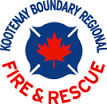Air quality boosted by more wood stove exchange funding
Wood stove exchange programs in communities throughout B.C. will share another $200,000 in funding to help more people swap old wood stoves for new high-efficiency models.
The Province is providing $200,000 to the BC Lung Association to expand and continue the successful wood stove exchange program.
Local governments, non-profit organizations and airshed or air quality management organizations interested in starting or extending a wood stove exchange program are invited to apply by Oct. 14 for programs beginning January 2012.
New high-efficiency wood stoves are proven to burn one-third less wood, reduce emissions by up to 70 per cent and significantly reduce risks of chimney fires.
But there are still about 120,000 old, inefficient wood stoves in use around B.C. These units can affect the health of homeowners, their neighbours and overall airshed health.
Provincial funding allows participating communities to provide a $250 rebate on the purchase of a new wood stove, insert or pellet stove. Many local governments provide additional rebates and waive permit fees.
Dealers, manufacturers and suppliers may also offer additional discounts to encourage people to upgrade their woodstoves.
Further rebates are available through:
- the LiveSmart BC Efficiency Incentive Program: http://www.livesmartbc.ca/incentives/efficiency-home/index.html
- the Federal ecoENERGY Retrofit Grants: http://oee.nrcan.gc.ca/residential/personal/grants.cfm
Wood smoke contains tiny particles called particulate matter (PM). Particulate matter that is 2.5 microns or less in diameter, called PM2.5, is small enough to be breathed into the deepest parts of the lungs.
It is associated with all sorts of health problems, from a runny nose and coughing, to bronchitis, asthma, emphysema, pneumonia, heart disease and even premature death.
Hot facts
- Following good burning techniques is just as important as using a high-efficiency model of wood stove.
- A few simple tips can significantly reduce emissions from wood stoves – and as a bonus, homeowners will need to burn less wood to heat their home.
- Dry, seasoned wood burns best. Firewood should be seasoned by splitting and stacking it in the spring. Woodpiles should be protected from rain and snow, but still have good air circulation.
- Burn only clean, dry wood. Never burn green, wet, painted or treated wood – including plywood. Never burn household garbage.
- Create small, bright fires by using small pieces of kindling to start the fire and keep it moderately hot, adding larger pieces of split wood as required. Do not damper down the fire more than necessary because that produces more smoke.
- Watch for signs of incomplete burning, such as visible smoke coming from the chimney or long, lazy flames in the firebox. Opening the dampers will allow more air into the stove and improve the fire’s efficiency.
- Where possible, avoid burning on poor air quality days.
Learn more
Wood stove exchange program funding:
http://www.bcairquality.ca/topics/wood-stove-exchange-program/proposal-info.html
Air quality readings for communities around B.C.: www.bcairquality.com/readings

























Comments